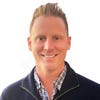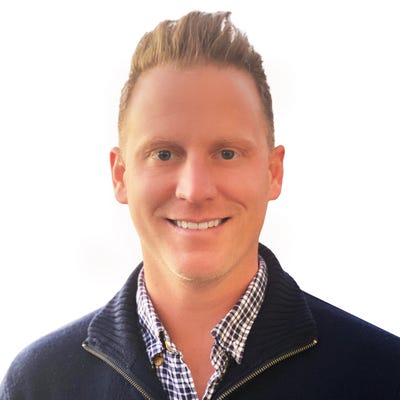Navigating Your Way to Success in the Medical Device Industry
How to push the boundaries of innovation in medtech, even in the face of failure.

At a Glance
- Innovate with purpose.
- Ask the right questions.
- Lean into your passion.
The medical device playground fosters life-changing products that genuinely impact the lives of many, but it’s not for the faint of heart. This isn't just about winning or losing; it's about pushing the boundaries of innovation, even in the face of failure.
Success in the dynamic medical device field requires more than knowledge and skill; it demands adaptability and decisive decision-making.
As the co-founder and CEO of FastWave Medical, I have a fair share of experience in the space. As the founder of Medsider, I've had the wonderful opportunity to chat with some of the field's most innovative entrepreneurs.
Read on to learn about the art of flexible problem-solving from some of the best in medtech.
Innovate with purpose.
David Neale, co-founder and CEO of Argá Medtech, boasts a wealth of experience that includes leading product development teams worldwide, covering diverse areas such as cardiology, neurology, nephrology, and orthopedics. Throughout his career, he has always been focused on combining innovation with nimbleness, especially when he launched his latest startup amidst the chaos of the COVID-19 pandemic.
Never one to accept the status quo, David consistently challenges his team with probing questions like "So what?" and "What if?" to have them step out of their comfort zones. This culture has become the engine for innovation within the company, allowing them to develop solutions that resonate with the real needs of patients, providers, and hospitals.
Integrating personal satisfaction with professional success is another philosophy David lives by. "Make sure to smile and have fun in everything you do," he advocates. This viewpoint gives you a flexible mindset that’s crucial when facing unexpected challenges. Thanks to this framework, Argá Medtech didn’t just adapt during the global pandemic — they thrived and evolved.
Make it personal and ask the right questions.
Kate Rumrill, the driving force behind Ablative Solutions, might have started her journey with an interest in neurosurgery, but it was a chance detour into toxicology research that revealed her true calling. Now, as CEO, she’s leading the way with the Peregrine System, an innovative hypertension treatment
Both of Kate's parents have been diagnosed with hypertension, which gives her a deeply personal reason to be invested in the technology she's developing and a nuanced understanding of the complexities of the condition. This allows her to focus on what matters and adapt to changing dynamics in an agile manner.
Kate also knows that she has to prepare rigorously in the unpredictable landscape of the medical device industry to be able to pivot with confidence. For example, you want to make sure that you're designing your clinical trials to answer the questions from the people who have gravity. It's regulatory, it’s reimbursement, and it's also the users. Identify what these stakeholders need early on by asking the right questions and don’t be afraid to explore the unknown.
Kate’s advice for budding entrepreneurs is as follows: Lean into your personal drive and connection. Having a deep understanding and belief in the technology you're working on is fuel for motivation. Anchor your conviction in expert opinions, a nuanced comprehension of the condition, and meticulous scientific evaluation, and never cease to challenge yourself in the process.
Lean into your passion.
Shriram Raghunathan has had a remarkable journey — from designing circuits for cell phones to pioneering therapeutic wearables with Noctrix Health. His love for music and fascination with how the brain perceives music moved him from electrical to neuroscience engineering.
Shri is technical by nature, but his approach to problem-solving is humanitarian. Upon noticing that many epilepsy patients couldn't access life-changing therapies, he set his mind on transforming medical devices into accessible alternatives to pharmaceuticals for treating Restless Legs Syndrome (RLS).
However, the development of Shri’s flagship product wasn't an overnight success. It required meticulous experimentation with waveforms and nerve targets, all while maintaining a focus on patient comfort in electrical stimulation.
To follow Shri’s steps, identify real-world problems that resonate with you and channel your passion and skill set to create practical solutions. Keep your focus on the end user's needs and prioritize accessibility and comfort. As Shri states, “A strong unmet need with a big market rarely needs a ton of publicity or hype.”
Balance your vision with constructive feedback.
Dr. Krishan Ramdoo is an innovator and entrepreneur who spotted an opportunity to revolutionize a centuries-old tool to make a real difference in healthcare. After recognizing the need for a more advanced otoscope to enhance ear examinations, he developed a proof of concept that earned him an innovation prize. The product then became the foundation for Tympa Health.
To get there, however, Dr. Ramdoo’s primary focus was on the actual problem at hand. He broke it down to understand the key challenges and then worked on developing a tool to address the proper examination of the ear. The realization that prompt and simple interventions could drastically improve patient lives ignited his passion even further.
In many cases, innovation doesn't come without resistance. That was also the case for Dr. Ramdoo, but he didn't let that deter him. He embraced feedback and used it constructively. His knack for analyzing different perspectives and adapting them to his solution was pivotal in his company’s success.
Dr. Ramdoo’s approach to problem-solving is to recognize opportunities where innovation is needed and then start working on them in small yet steady steps. Focus on the performance of your technology during the initial phases rather than trying to build up hype. Then build a tangible prototype to demonstrate your position against the sea of commentaries.
Winning awards or securing small funds can provide validation and give you more room for further development, but most importantly, the feedback you’ll receive provides balance for your vision. That said, carefully assess the motivations behind each piece of advice before taking them on as undeniable facts.
Take it one smart step at a time.
David Narrow, an accomplished entrepreneur, embarked on his medical device journey as a biomedical engineer. His innovative spirit led him to participate in a bio-design program at Johns Hopkins, where he created the initial prototype for what would become the core technology for his company, Sonavex.
According to David, flexibility is paramount in product design. You should keep yourself from falling in love with the initial concept because that's just the starting point.
David emphasizes that the perfection of a product’s design is the result of continuous refinement, continuous learning, and understanding that initial assumptions are often theoretical. For that, embracing a systematic approach to innovation is essential.
Start by defining clear and measurable goals for each stage of development. Implement a feedback loop that involves end-users, stakeholders, and other external experts, and set specific checkpoints to evaluate your progress. The best way to do it is to invest in both time and tools to gather user insights through surveys, hands-on feedback, and market research. Remember: the path to perfection is not linear.
Pick the right battles and then go all in
Innovating in the world of medtech involves a combination of passion, adaptability, rigorous questioning, and acute focus on the real-world needs of multiple stakeholders–patients, physicians, and payers.
Here are some of the nuggets of wisdom from industry pioneers on solving problems while staying flexible:
Create a winning culture: Challenge your team, focus on real needs, and integrate personal satisfaction with professional success.
Make it personal: Pursue fields that you are naturally inclined towards.
Channel your passion: Your curiosity, passion, and knowledge in other domains are likely relevant. Find a way to apply them to a solution.
Be discerning with feedback: When you attempt to develop something novel, you’ll inevitably face naysayers. Learn to differentiate constructive feedback and apply it to your work.
Follow a systematic approach: Define clear milestones, invest in feedback loops, and recognize when to pivot or persevere.
About the Author(s)
You May Also Like



.png?width=300&auto=webp&quality=80&disable=upscale)
